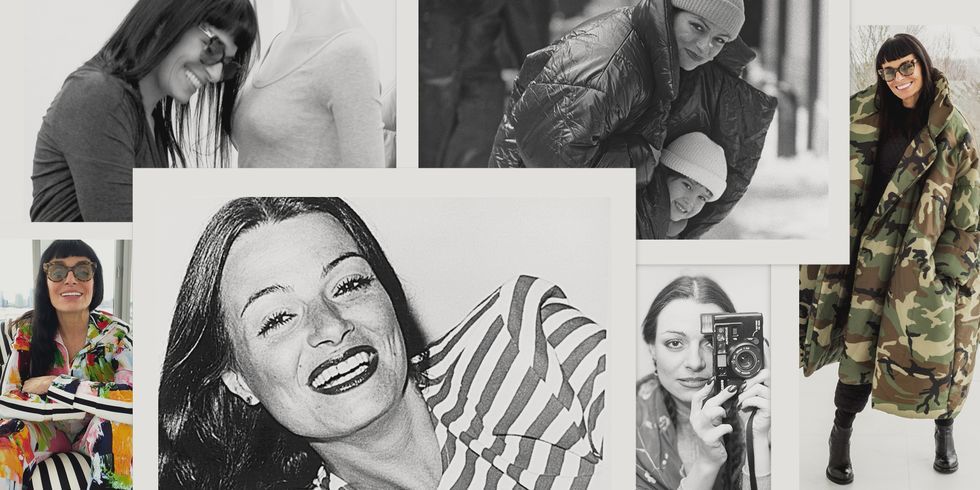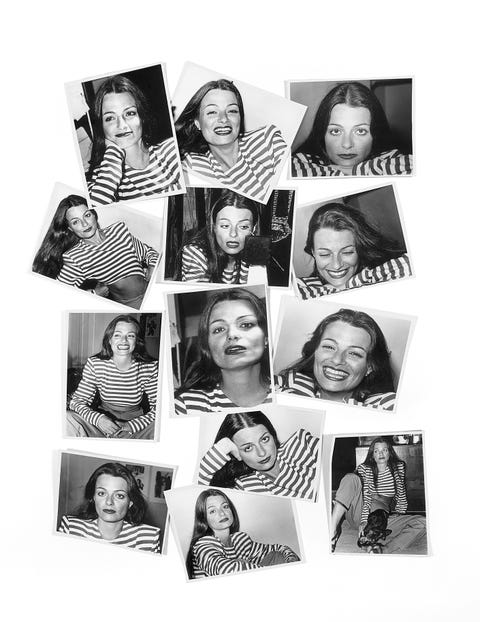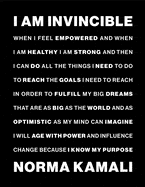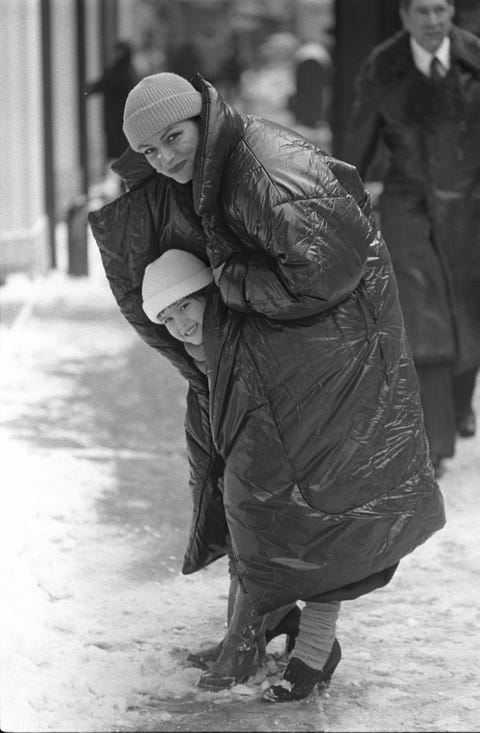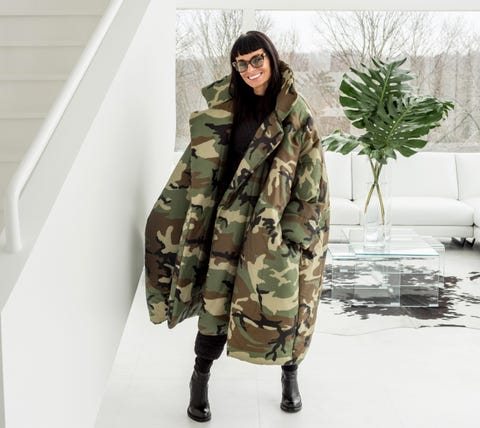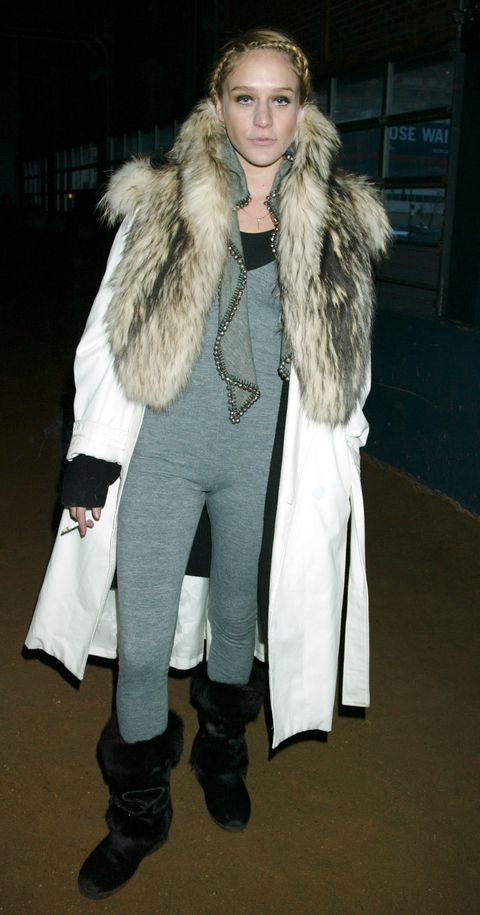Style Points is a weekly column about how fashion intersects with the wider world.
The first thing I notice about Norma Kamali over Zoom—besides her impossibly youthful, famously acupunctured face and her signature cat-eye glasses, that is—is the quote painted on the wall behind her, by Søren Kirkegaard: “Life is a mystery to be lived, not a problem to be solved.” “The man I’m with,” she explains, demurely referring to her fiancé, “sits opposite me, and he looks at his favorite quotes on my wall, and I look at my favorite quotes on his wall.”
It’s not hard to imagine someone adorning their walls with some of Kamali’s own wisdom someday. It almost feels reductive to call her a designer, because she is about a thousand other things—a wellness pioneer, a guru to generations of young designers, a font of assorted advice, and now an author, with her book I Am Invincible having come out earlier this month. The book grew out of a 50th birthday present she gave a friend—a Moleskine illustrated with Kamali’s 50 tips on turning 50. She framed the book-length version as a primer for every stage of life, going up to the century mark and beyond; She calls it “the handbook that I wish I would’ve had.”
Kamali wasn’t always into what we now call wellness (and what she prefers to term “healthy lifestyle”) but she grew up with a health-nut mom, to whom the book is dedicated. “I just thought my mother was a freak,” she remembers. “When you have friends coming to your house, and your mother has a big juicer and herb gardens on the windows in Manhattan, in a little apartment? I was always embarrassed by her crazy practices and of course, I’ve turned into her, clearly.”
When Kamali first took up meditation and plant-based eating, people called her “kooky,” she says. Now, they’d probably call her prescient. She’s since made detours into everything from juicing to creating products with her favorite super-ingredient, olive oil, to the aforementioned facial acupuncture. Fashion, after all, has its limits. “I think a dress can make you feel good. However,” she says, “a dress comes off. There’s no dress, there’s no coat, there’s no pair of shoes that can compete with the feeling that you have when you feel really good in your body.”
And contrary to what the $4 trillion wellness industry would have us think, feeling good in your body doesn’t have to involve expensive workout classes, leggings made to withstand an ultramarathon, or pricey self-care products. She’s always believed in keeping things low-key. “You don’t need 15-step skincare,” she says, “you need simple. Three things that work. That’s it. My mother used Pond’s cold cream her entire life. Her skin was magnificent. She really showed me simplicity is everything.”
Kamali started her fashion line because she was inspired by what she saw in swinging ’60’s London. American style of the time was less exciting to her. “I did not relate at all to it. I hated it,” she says, her tone as blunt as her bangs. Her fellow students at FIT, where she’d enrolled to study illustration, “all dressed, top to bottom, exactly like Mad Men.” Meanwhile, “the energy of what was going on in London was just incredible.” She would bring back clothes for friends, soon opening a 9-by-12-foot store selling her fresh-from-Carnaby-Street finds. She began making her own designs (with some sewing instruction from her mom) and quickly gained a following.
Kamali had gotten married at 19, but was unhappy from the beginning, and remembers crying on her wedding day. Her husband was helping her run the company, but she soon left both her marriage and her business to start afresh. She only had $98 to her name, but if she’d stayed, she says now, “I would just not have a soul.”
Cycles of re-starting everything from scratch feel like a common theme in Kamali’s life. When, at 30, she embarked on her new single-girl existence, she didn’t have curtains or even a mattress in her apartment. Right before turning 50, she was on the opposite end of that spectrum, living in a stuffed-to-the-gills brownstone near the Metropolitan Museum of Art. It was one of those buildings “that I always passed by as a kid and thought, ‘Who lives in these? These are magnificent.” Now, it was her home. She’d restored it completely and decorated it with overstuffed, heavily embroidered furniture of her own design and unusual antiques she found. “I remember sitting and sketching in the library, looking around at all the things in the room, just in awe of the beauty,” she says. “And my pencil was sitting on the paper and I thought, ‘This beauty is actually trapping me…and I’m not going to go past it unless I get rid of everything.’” On her 50th birthday, she purged it all and vowed never to collect again, and she’s kept her life hyper-minimal ever since. “It’s so freeing,” she says, listing the tightly-edited list of items in her apartment, which include her yoga mat and her fiancé’s Peloton. “I’m not possessed by my possessions.”
The possessions she has hung onto include many of her own ingenious designs. Kamali is perhaps best known for the sleeping bag coat she devised in 1973, using her own sleeping bag from a camping trip. (“I did not think of it as fashion, I thought of it as ‘I hate the cold so much.’”) Even she has been surprised by its staying power— It remains a bestseller today. “Depending on the year since then, it either is functional first, and then fashion, or fashion first and then functional. And so it’s survived all of these decades, because it’s a sustainable piece of clothing you never have to throw away. If you clean it and take care of it. You can have it for life.”
In 1979, decades before the pandemic found us all in sweatpants, she created a kind of proto-athleisure collection of 36 pieces, all in gray sweatshirt material, inspired by Army-Navy store finds she wore as bathing suit coverups. She revisits the fabric often, most recently for resort 2021, where it found its way into suits and gowns. Unlike so many in her profession, she will not tolerate any sweatpants slander. At one point in our conversation, she swings her leg above her desk to show me the sweats she’s wearing right now. She was early to the concept of seasonless wear, too, something much of the rest of fashion is still catching up on. The idea of multiple season wardrobes kept in storage feels poisonously old-fashioned to her: “Who has room for that?”
Winnowing down what you do and don’t have room for is what Kamali has been doing all her life. She’s a prime advertisement for the hoary old idea of getting better with age and editing your existence as you go along. It wasn’t until her 50’s, she tells me, when she realized “I’m going to be with a guy who deserves me.” She met her soulmate at 65. Now, at 75, she’s planning a wedding to said soulmate. It was postponed because of the pandemic, but she is hoping to do it in person eventually, when it’s safe to do so. “To be honest, I just want to dance,” she says. “A lot. And sweat. And have a good time.” What could be more aspirational than that?
This content is created and maintained by a third party, and imported onto this page to help users provide their email addresses. You may be able to find more information about this and similar content at piano.io
